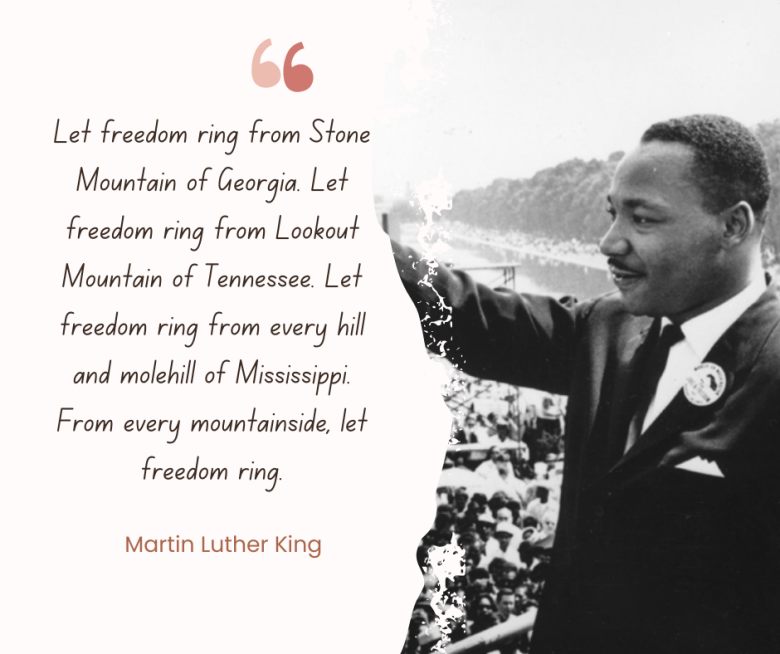
Most communicators – from marketers to public speakers – want to be able to tug at the emotional heartstrings of their audience. Turns out, there’s a formula.
In a TEDx talk that has been watched over one million times, Nancy Duarte shows there is nothing magical about writing deeply resonating speeches. It all comes down to structure. And she has found the framework shared by the greatest communicators in history.
As the key to effective communication, this universal structure can help you deliver transformative speeches, inspiring and engaging your audience.
You may have delivered solid presentations that carried outstanding value, yet fell flat. Connecting with people on a deep emotional level requires a shift in approach. The “secret” pattern, one of contrast in communication, explains the success of everyone from Steve Jobs to Dr. Martin Luther King.
Why do some talks inspire, while others don’t? According to Duarte, here are the key takeaways.
Use Contrast to Engage
“So it’s like, you know, here’s the past, here’s the present, but look at our future. Here’s a problem, but look at that problem removed.”
Contrast is a powerful rhetorical device that helps speakers simplify complex concepts and force audiences into choices on their terms. It’s the backbone of Duarte’s recipe for captivating and inspirational communication.
Contrasts exploit and capitalize on human emotions. Successful communicators compare what is vs. what could be in a hypothetical, brighter future. They contrast the dire status quo with an ideal future.
The first step is to build an unfavorable image of the status quo in the minds of the audience. Skillful communicators can use creative metaphors and emotional repetitions to achieve this goal.
Then they turn these tools around and use them to paint an attractive picture of the future. The call to action at the end connects the two steps, offering a clear path from one to the other.
Example from the Talk: Martin Luther King’s iconic I Have a Dream speech is the perfect illustration of this push-and-pull between two contrasting ideas. Dr. King contrasts the realities of his time with his dreams of equality and justice. He increases this contrast, seasoning it with emotional repetitions, to reach a brilliant climax.
Lesson for Communicators: Alternate between two sides of a contrast throughout your speech to keep your audience intrigued and excited. Don’t talk solely about the benefits of your products or ideas.
Paint a detailed picture of the status quo that screams for improvement and contrast it with a compelling vision of a better future. The stronger the contrast between the two, the more effectively you will trigger emotional engagement.
Tell Stories
“…for thousands of years, illiterate generations would pass on their values and their culture from generation to generation, and they would stay intact.”
Duarte points out that our brains are hardwired for stories. Effective communicators are great storytellers, creating emotional connections and simplifying complex messages through stories.
 Storytelling is a profoundly human way to convey information.
Storytelling is a profoundly human way to convey information.
In her speech, Duarte uses storytelling herself to create an initial bond with the audience and capture attention. She knows a good story can elicit physical reactions from the audience, making pupils dilate, spines tingle, and hearts race.
She details the structure of the story, pointing out something interesting: the main characters of the stories used in speeches aren’t the narrators. Narrators act like mentors to the audience, the true main characters.
Example from the Talk: Martin Luther King was a master of storytelling, punctuating his narration with metaphors that resonated deeply with his audience. His “I Have a Dream” speech is an example of double-edged storytelling, in which he contrasts the reality of those days with his vivid dream of a more just and equitable future.
Lesson for Communicators: Use storytelling in presentations to make facts stick. In addition to connecting deeper with your audience, stories help you make your message memorable.
Repeat Key Messages
“So he was repeating himself. He was using the same words and phrases so people could remember and recall them.”
Repetition is a rhetorical tool that serves complex purposes in speeches. Repetitions in speeches emphasize points and help make messages memorable. By repeating something, orators drill their messages into the minds of the audience.
Repetitions also:
- Reinforce ideas
- Clarify
- Reinforce the structure of the speech
- Enhance emotional impact
Dr. King’s “I Have a Dream” repetitions are legendary. Through them, he controls the emotional flow of his speech, increasing its intensity as he nears the conclusion.

Example from the Talk: Duarte pinpoints repetitions in Dr. King’s speech, identifying them as modulators of emotional engagement. She does the same for the idea of “revolution” present in Steve Jobs’ product launch speeches. Beyond reinforcing their messages, both communicators used repetition to control and guide the emotional involvement of the audience. Emotional connection in communication is one of the most fundamental ingredients of oratory success.
Lesson for Communicators: Identify your core message and make it the subject of strategic repetition. Repetition allows you to control the cadence and emotional pace of your speech, serving as a rallying cry for your audience.
Create a Memorable Ending
“The future isn’t a place that we’re going to go. It’s a place that you get to create.”
Memorable endings have a considerable effect on emotional impact. They sum up messages and deliver them in an easy-to-remember, emotionally impactful form as a send-off for the audience.
Great communicators understand the importance of the last words they say. Memorable endings, like repetition-prone main messages, are punchy and highly quotable.
They also:
- Help communicators establish authority and confidence
- Tie together the themes, narratives, and ideas of the speech
- Motivate the audience to take action
Example from the Talk: Steve Jobs, like other outstanding communicators, was a master of memorable endings. “Stay hungry, stay foolish,” he urged students at the end of his Stanford commencement speech, creating one of the most quotable moments of his career.
Lesson for Communicators: The last words of your speech and presentation grant you a unique opportunity to create a lasting impression. Use it. Plan your ending carefully. Make it punchy, concise, and unforgettable. Turn it into the most memorable part of your message.
Key Takeaways for Communicators
These communication techniques unleash energies through friction, tension, and drama, turning them into emotional connection and engagement. Here are the communication lessons Duarte identifies in her speech:
- Use contrast to build tension. Contrast in communication clarifies ideas, creating drama and inviting emotional engagement.
- Tell stories to build connections. Stories engage the mind, providing an emotionally engaging frame to raw data.
- Don’t shy away from repetition. Repetitions convey passion and commitment. They reinforce ideas and make your message memorable.
- End strong. A powerful conclusion creates a lasting impression. Leave your audience with a highly quotable summary of your message.
At Media Shower, our AI-powered platform is trained on great communication techniques, helping you create great marketing campaigns in a snap. Take a free trial of the Media Shower marketing platform.